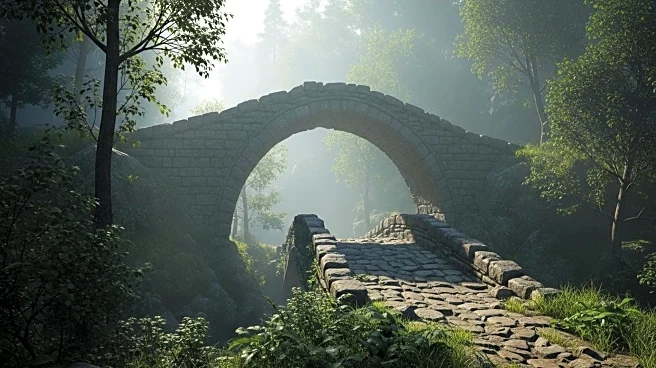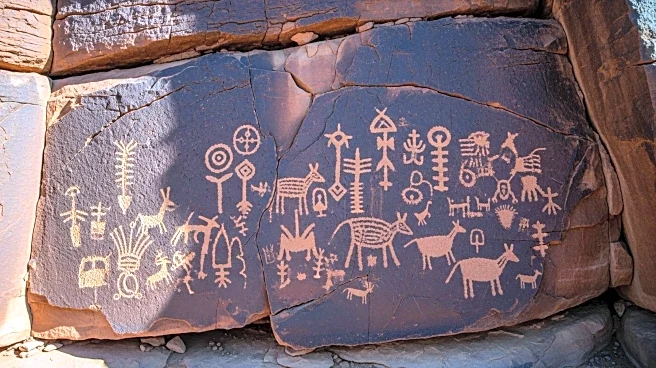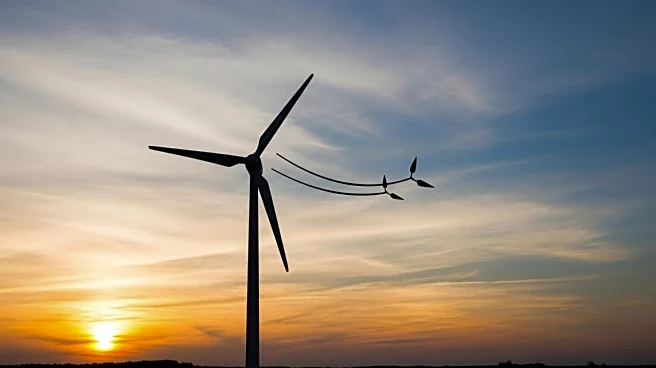What's Happening?
Recent archaeological research has uncovered evidence of a lost land bridge that may have facilitated early human migration between present-day Türkiye and Europe. The study, published in the Journal of Island and Coastal Archaeology, reveals Paleolithic activity in Ayvalık, suggesting an alternative route for Homo sapiens entering Europe. Traditionally, it was believed that early humans traveled through the Balkans and the Levant. However, the discovery of 138 stone tools across 10 sites indicates that the northeastern Aegean coast could have served as a key passageway during the Pleistocene era. Dr. Göknur Karahan from Hacettepe University, part of the research team, highlighted the significance of this region as a potential new frontier in human evolution. The findings suggest that during the Ice Age, lowered sea levels exposed vast coastal plains, creating a natural bridge linking Anatolia to Europe.
Why It's Important?
This discovery holds significant implications for understanding human migration patterns and technological evolution. It challenges the prevailing narrative of human dispersal into Europe, suggesting alternative pathways beyond the traditionally emphasized northern routes. The presence of Levallois-style tools, associated with Neanderthals and early Homo sapiens, indicates shared technological traditions across Africa, Asia, and Europe. This research not only enriches the understanding of human adaptation and mobility but also opens new avenues for exploring prehistoric human interactions and exchanges. The findings could shift the focus of Pleistocene archaeology, encouraging further exploration of under-studied regions like Ayvalık.
What's Next?
The research team recommends a multidisciplinary approach for future studies, including absolute dating, stratigraphic excavation, and paleoenvironmental reconstruction. These methods are essential to clarify the temporal depth and functional character of the Ayvalık assemblage. The region's potential as a long-term hominin habitat and its role in technological evolution during the Pleistocene warrant further investigation. Despite challenges posed by active geomorphological processes, Ayvalık may still hold valuable clues to early human occupation and technological development.
Beyond the Headlines
The discovery raises ethical and cultural considerations regarding the preservation and study of ancient artifacts. It highlights the importance of interdisciplinary collaboration in archaeology, combining geological, environmental, and technological expertise to uncover human history. The findings also underscore the need for sustainable archaeological practices that respect local communities and environments while advancing scientific knowledge.














